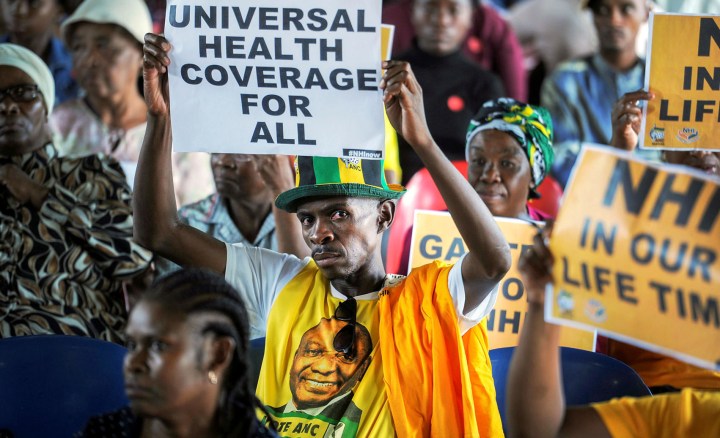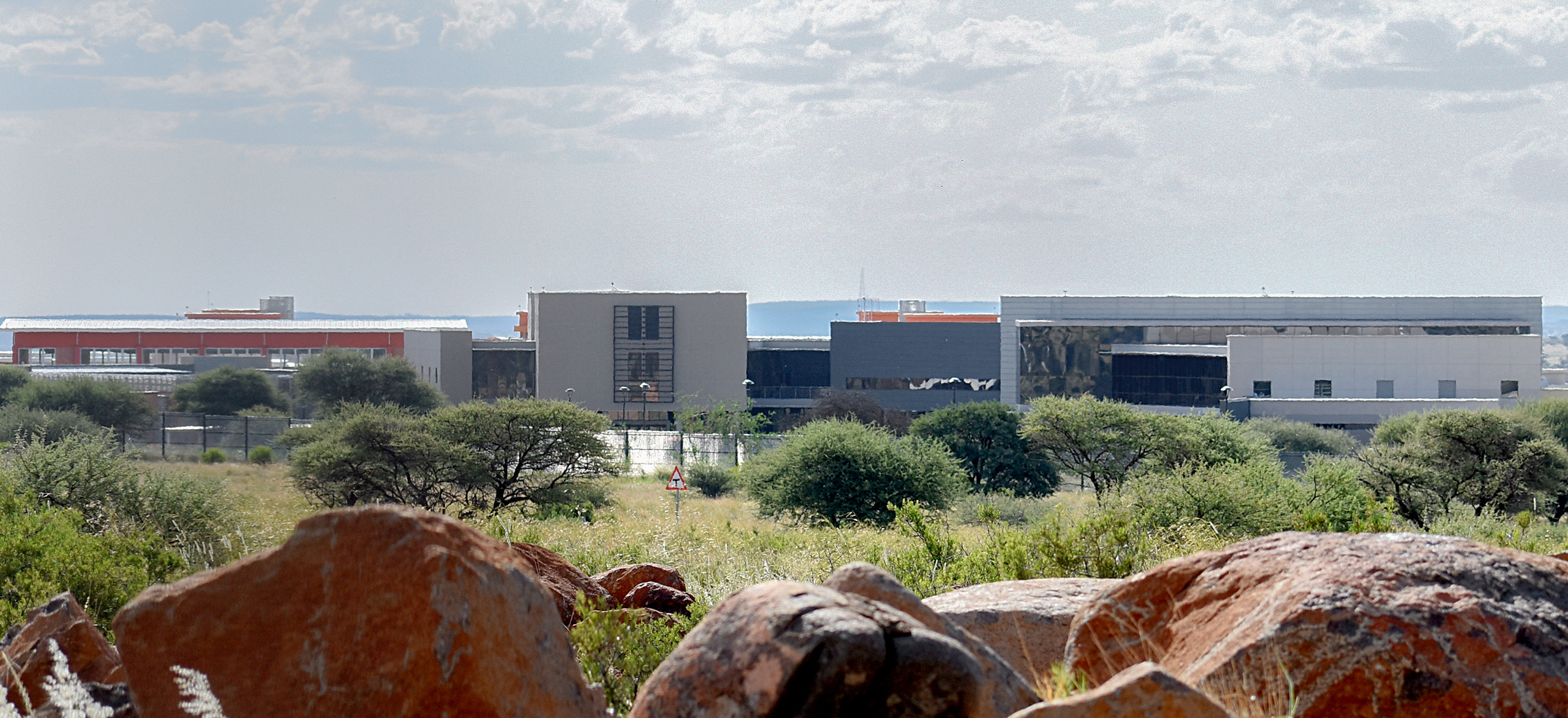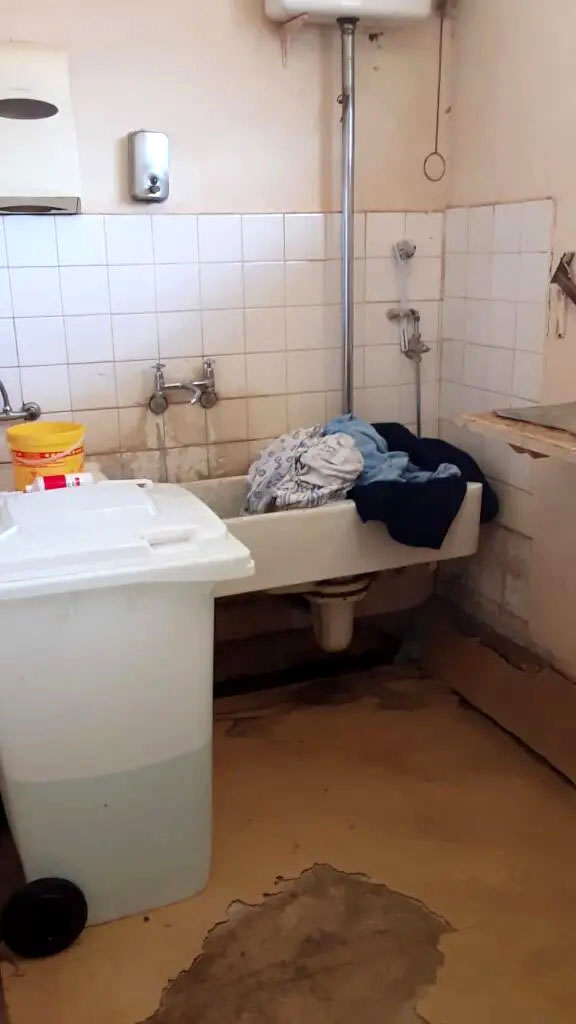SPOTLIGHT OP-ED
Underinvestment in healthcare infrastructure will cost SA in the long run

Investment in public health facilities is crucial as South Africa weathers storms on various fronts — from drought (water shortages) and flooding putting strain on health infrastructure to a harsh economic climate that makes private healthcare unaffordable for more and more people.
Adding to South Africa’s disasters is the fact that the number of people without medical aid has increased by 2.2% this year, which is well above our 1.3% population growth. As more people use public healthcare facilities, it is only sensible that the health system will have to be better equipped and will need more capacity to serve more people.
In this context, it is worth exploring whether the healthcare system can withstand the continued onslaught of multiple overlapping crises and if the government has the necessary political will and commitment to match its concern over these crises with the investment necessary to withstand them as we prepare for National Health Insurance (NHI).
Unfortunately, the investment in health infrastructure does not reflect this — putting into question whether quality healthcare for all will be achieved in our lifetime.
NHI: A dream deferred?

The National Health Insurance (NHI) Bill, currently before Parliament, provides for an NHI Fund and outlines the related funding and governance arrangements. (Photo: Rosetta Msimango / Spotlight)
As part of South Africa’s move towards health systems reform, which includes the improvement of public health facilities, the establishment of a National Health Insurance (NHI) system emerged as an ANC conference resolution more than a decade ago and is arguably the biggest health reform for the country this century. The premise of this resolution was to help achieve universal access to quality healthcare services. The NHI Bill, currently before Parliament, provides for an NHI Fund and outlines the related funding and governance arrangements.
On the country’s readiness and funding of the planned reforms, many have expressed concern, as was reflected in public hearings on the bill. Some concerns related to the readiness of facilities. Recently, the minister of health, Dr Joe Phaahla responded to a parliamentary question acknowledging the massive infrastructure needs of health facilities in the country.
“It is indisputable that public hospitals do need infrastructure maintenance and investment. The department quantified the anticipated cost at close to R200-billion, which is clearly not going to be available in the short to medium term. There are, nonetheless, projects that are being attended to within the limits of available budget,” he said.
According to the department’s figures, the number of ongoing infrastructure projects for maintenance and construction (new or replaced) by February this year stood at 730 and 57, respectively.
Massive infrastructure needs
Moreover, the Department of Public Works and Infrastructure released the National Infrastructure Plan 2050 Phase 2 for public comment in October 2022 and found that South Africa’s healthcare infrastructure is characterised by poor public health facilities that are “at risk of failure”.

The multimillion-rand Kimberley Mental Hospital has long not been functioning at capacity. (Photo:: Emile Hendricks / Spotlight)
This includes a severe shortage of mental healthcare facilities, with only 22 specialists and fewer than one in 10 people living with a mental health condition receiving the care they need; 30 to 40 locations have underserviced primary healthcare facilities; a shortage of Level 2 and 3 beds; and difficulties in recruiting staff, mainly in rural areas.
Added to this are the infrastructure backlogs which predate the Covid-19 pandemic, poor waste management practices across facilities in the country, and insufficient maintenance. The department has quantified a “current national infrastructure backlog” at R7.9-billion.
It is worth stressing that infrastructure and staffing go hand-in-hand and should be planned and budgeted for in tandem. Having glitzy new facilities that stand half-empty reflects poor planning — as does having fully staffed facilities with collapsing infrastructure.
In this context, it is difficult to see how public health facilities designated for the NHI will meet the quality standards required by the Office of Health Standards Compliance. According to section 39 of the 2019 NHI Bill, for the facilities to be accredited by the NHI Fund they must provide the minimum required range of services and allocate the appropriate number and mix of healthcare professionals. It is troubling that since 2020 the National Treasury has been shifting funds allocated to NHI to other uses.

An entrance of Komani Clinic in the Eastern Cape. (Photo: Luvuyo Mehlwana / Spotlight)
Another concern is that the 2023/24 Budget proposed a 4.9% reduction of the NHI grant in real terms. While we recognise that the NHI received a boost in funding last year, the funding required to prepare the country for its implementation is left wanting. Furthermore, expenditure has been redirected to the new central government hospital in Polokwane, which has been in the pipeline for more than 10 years already and is plagued by underspending.

A washroom at Thusong Hospital in North West. The hospital was closed last year, following safety concerns. It was built on dolomitic soil. (Photo: Nthusang Lefafa / Spotlight)
Investment in the Health Facility Revitalisation Grant is falling in real terms
The Health Facility Revitalisation Grant, which serves to construct, maintain and rehabilitate these facilities to better facilitate the delivery of health services, saw a nominal increase in funding of 2.7% in the new budget. Considering the rising costs of living — the CPI inflation rate is projected at 4.9% for 2023/24 — healthcare facilities have less funding than they did last year to deliver health services, but for more people.
Furthermore, the National Treasury did not allocate any additional funding towards keeping health facilities operating during load shedding. Over the next three years, the funding for health infrastructure increases at 4.3% while the inflation rate over the same period is projected to be 5.5% by the National Treasury, indicating no real intention to address these issues over this period.
How does load shedding factor into this?
On Monday, 27 February, the Department of Cooperative Governance and Traditional Affairs (Cogta) released the National State of Disaster regulations and flagged health infrastructure as a priority. In a statement, Cogta explained that the continuous provision of services for hospitals and water facilities will be supported by the installation of alternative energy resources and measures to provide an uninterrupted power supply. However, to ensure the continuous operation of health facilities, national, provincial and local governments must source funds from within their available resources.
We are curious to see how the right of access to healthcare will be protected when there is no additional funding allocated to equip facilities for achieving this.
The need for climate-resilient health infrastructure
In the 2023 Budget documents, the Treasury reflects (and rightly so) on the importance of climate-resilient and sustainable infrastructure amid the increasing frequency of extreme weather events like floods. Effective NHI implementation would require health facilities that display resilience to these events. Unfortunately, there is no additional funding allocated to enable clinics and hospitals to achieve this resilience, which is disheartening considering that there are still communities that rely on health facilities that are built with mud and are unlikely to withstand extreme weather events.
Last year, the fatal KwaZulu-Natal floods reportedly destroyed 85 health facilities. Surprisingly, the provincial Department of Health received no additional funds from the Treasury to repair this damage and is reportedly being forced to reprioritise an estimated R200-million of its funds intended for other health priorities. This extends to the Eastern Cape, which had 12 health facilities destroyed but no explicit additional funding allocations to support the recovery of these facilities.
The failure to invest in health infrastructure that is resilient enough to withstand severe weather events due to climate change means that the country will have to continue to rely on disaster relief or the reprioritising of dedicated funds to cater for loss and damage, which is costly and unsustainable and does little to mitigate the predicted damaging onslaught of climate change on health infrastructure and systems.
As South Africa weathers multiple disasters — climate change and flooding, an energy crisis, mass unemployment and falling economic growth, the pursuit of quality healthcare for all who live and work in the country remains crucial. However, if we are to achieve this, we must bolster quality investment in our healthcare infrastructure. DM/MC
Baduza is a legal researcher and Lencoasa is a budget researcher at SECTION27.
Note: This opinion piece was written by employees of SECTION27. Spotlight is published by SECTION27, but is editorially independent — an independence that the editors guard jealously. The views expressed in this piece are not necessarily those of Spotlight.
*This article was first published by Spotlight — health journalism in the public interest.





















 Become an Insider
Become an Insider
Comments - Please login in order to comment.